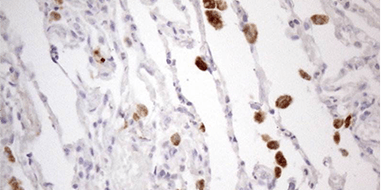DHA-PS
Time:2018-05-11The most common age-dependent neurodegenerative diseases such as dementia and Alzheimer’s have become urgent public health problems in many countries around the world. Two nutrients, docosahexaenoic acid (DHA) and phosphatidylserine (PS), are both thought to be important in the structure and function of the brain and may be relevant to these issues.
Research indicates that an adequate intake of DHA in the diet is associated with prevention of—and therapeutic effects upon—the disorders. In the 1980s, one of the first uses of phospholipids and DHA together for brain disorders was documented; a method of using 1-acyl chains/2-DHA PS species, which was extracted from bovine cortex, as the first cholinergic drug in Europe to alleviate and treat Alzheimer’s disease [1-3]. However, due to the bovine spongiform encephalopathy (mad cow disease) crisis that hit Europe in the 1990s, PS derived from bovine brains was perceived as risky and less commercially feasible. The next generation of phospholipids came in the form of transphosphatidylated soybean PS and egg yolk PS, used as alternatives to brain cortex PS, beginning in the mid-1990s.
PS, an aminophospholipid, is widely distributed among animals, plants and microorganisms. It is a component of mammalian cell membranes and plays important roles in biological processes such as apoptosis (cell death) and cell signaling. Approximately 30 g of PS is found in the human body, and about half of this amount (13 g) is present in brain tissue [4]. The fatty acid composition of endogenous PS depends on its locale and function in the cell. The brain and eye are also highly enriched with omega-3 fatty acids. It has been suggested that DHA is maintained at certain levels in the retina despite reductions in dietary omega-3 fatty acids, and a decrease in dietary DHA has been observed to lead to a decrease in PS [5].
Marine phospholipids are a growing source in the marketplace, probably most well-known from krill and fish roe and naturally enriched with omega-3s. In addition, marine phospholipids have some unique properties compared to crude or refined fish oils. Marine phospholipids are more resistant to oxidation, provide better bioavailability and the ability to form liposomes. This potentially makes them an attractive choice as ingredients for dietary supplements as well as food fortification, where oxidation and incorporation into the food matrix are important. They may also play a unique role in the body. The omega-3s in phospholipid products can be bound to various types of phospholipids, where each have a different function. Marine omega-3 PS is defined as PS containing omega-3 long-chain polyunsaturated fatty acids (LC-PUFAs) at the Sn-2 position of the glycerol backbone. This makes them different from PS derived from vegetable sources, which do not contain omega-3s.
As the major structural and functional component of the central nervous system, DHA constitutes as much as 20 to 50 percent of the total fatty acid content of the adult human brain [6]. DHA and eicosapentaenoic acid (EPA) play an important role in brain function; both are orthomolecules whose functional sites are exclusively cell membranes, wherein they are structurally and functionally integrated via phospholipid molecules [7]. So the connection between EPA, DHA and PS is quite important in the nervous system.
Enzymecode Biotechnology Co. Ltd (ECB), in cooperation with Global Organization for EPA and DHA Omega-3s (GOED) member, ECA HealthCare Inc. (ECA), launched a marine phospholipid product,DHA-PS, in 2017. ECB’s goal was to launch an omega-3 product with higher absorption and synergistic effects between PS and the individual molecules of omega-3 fatty acids, beyond what could be provided by EPA and DHA by themselves, by vegetable PS, or their physical mixtures. Now that the product is launched, ECA HealthCare is conducting additional research into its effects.
DHA-PS was developed using enzyme technology that can be used on multiple raw materials of marine origin. There are versions containing krill oil that contain 8 percent DHA and 15 percent EPA, as well as fish-derived oils containing 20 percent DHA and 10 percent EPA. This new technology can potentially be combined with fish oil concentrates to deliver even more EPA and DHA in PS form. ECA is also continuing to work on new products containing the technology.
References
[1] Amaducci L. Phosphatidylserine in the treatment of Alzheimer’s disease: Results of a multicenter study. Psychopharmacol Bulletin 1988; 24(1): 130-134.
[2] Crook TH et al. Effect of phosphatidylserine in age-associated memory impairment. Neurology 1991; 41(5): 644-649.
[3] Crook T et al. Effect of phosphatidylserine in Alzheimer’s disease. Psychopharmacol Bulletin 1992; 28(1): 61-66.
[4] Pepeu G, Pepeu MI, Amaducci L. A review of phosphatidylserine pharmaceutical and clinical effects: Is phosphatidylserine a drug for aging brain? Pharmacol Res 1996; 33(2): 73-80.
[5] Kotani S et al. Dietary supplementation of arachidonic and docosahexaenoic acids improves cognitive dysfunction. Neurosci Res 2006; 56(2): 159-164.
[6] Jorissen BL et al. Safety of soy derived phosphatidylserine in elderly people. Nutritional Neurosci 2002; 5(5): 337-343.
[7] Rapoport SI. Brain arachidonic and docosahexaenoic acid cascades are selectively altered by drugs, diet and diseases. Prostaglandings Leukot Essent Fatty Acid 2008; 79(3): 153-156.



 CN
CN





